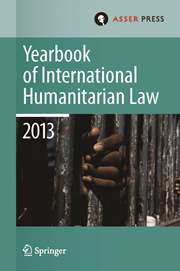No CrossRef data available.
Article contents
THE EXTRAORDINARY CHAMBERS IN THE COURTS OF CAMBODIA AND THE PROGRESS OF THE ‘KHMER ROUGE TRIALS’
Published online by Cambridge University Press: 02 February 2010
Abstract
The world has witnessed many atrocities since the followers of the Communist Party of Kampuchea, better known as the Khmer Rouge, marched into Phnom Penh on 17 April 1975 and unleashed a regime of terror of more than three and a half years on the Cambodian people in which an estimated quarter of the population perished. However, the fate that befell this small South-East Asian nation continues to grip and challenge the imagination. Perhaps it is the notion of the State turning on its own people on such an unprecedented scale that is so difficult to fathom. Perhaps it is the tranquil, smiling populace, forging a space in the modern era against the proud backdrop of the ancient Angkorian temples that makes such a dark recent history so improbable. Or perhaps it is the scales of justice, finally weighing in, more than thirty years after the crimes in defiance of donor countries' ‘tribunal fatigue’, that have refocused the world's attention.
The Khmer Rouge takeover had been preceded by a struggle for power which saw Prince Norodom Sihanouk, who had abdicated and governed Cambodia since independence in 1953, overthrown by Prime Minister Lon Nol and Prince Sisowath Sirik Matak on 17 March 1970. The new government was allied to the United States in the Vietnam War, fuelling Khmer Rouge resentment as well as that of Sihanouk who aligned himself with the communists. The Khmer Rouge gradually consolidated its power and control of territory, and when the time was seen to be ripe to institute the planned nationwide ‘agrarian dictatorship’, it easily overpowered the weak and corrupt Lon Nol government.
Keywords
- Type
- Current Developments
- Information
- Copyright
- Copyright © T.M.C. Asser Instituut and the Authors 2008


